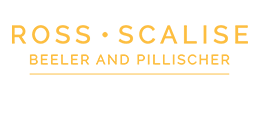Car accidents are one of the most common causes of injury in the country, and there are certain driving habits that greatly contribute to accidents. Every motorist has a responsibility to operate his or her vehicle safely, follow the rules of the road, and make good decisions while driving. When they don’t, they endanger themselves and everyone else on the road.
Some drivers may become frustrated by other motorists and vent their anger by driving aggressively or at excessive speeds. Others are impatient, and run stop signs or red lights. Still others are driving while distracted and make poor decisions because they are not paying close enough attention to the road. When a driver causes an injury to someone else by driving unsafely, he or she needs to be held accountable for their actions, and the victims deserve to be compensated for their losses and injuries.
Common Types of Dangerous Driving
There are several ways a driver can endanger others on the road, and this list is by no means exhaustive, but here are a few most common examples of dangerous driving:
- Speed limits exist to keep traffic moving at a reasonable and safe rate. They are adjusted for road conditions, such as curves, lane merges, and entrance and exit ramps on the highway. By disregarding the speed limit, a driver puts him or herself at risk, along with everyone in the vicinity. It’s also much more difficult to react to dangerous or changing road conditions at higher speeds. Speeding contributes to 29% of all fatal crashes.
- Blind spots. Every vehicle has blind spots, meaning that it’s not possible to see other vehicles near your own. It’s imperative that drivers make sure their destination lane is clear before changing lanes and always use their blinkers to signal when they intend to change lanes.
- Some drivers tailgate. This is extremely unsafe and can easily result in a rear-end collision. A good rule of thumb is to keep two car lengths between your vehicle and the one in front of you, and adjust for speed and road conditions, keeping more distance at higher speeds and during inclement weather.
- Dangerous turns. It’s always a good idea to check that the way is clear before making turns. Sometimes, traffic in the opposite direction will not stop or will simply run through an intersection. This can result in “T-bone” accidents, when a vehicle strikes another in the side mid-turn.
- Running reds. Some drivers will disregard stop signs or red lights. Some intersections only have stop signs for one direction, and by assuming the other direction has to stop, you’re endangering yourself and the other driver. Always check for “Opposing traffic does not stop” indications on stop signs at intersections. Many drivers try to beat red lights by accelerating when they see a traffic light turn yellow. It’s always better to slow down and wait for the next green light rather than speeding through an intersection.
When drivers don’t operate their vehicles safely, they put themselves and everyone around them at risk. It’s always better to err on the side of caution and never try to retaliate against aggressive drivers. If you’ve been injured by someone else’s reckless driving on the road, you shouldn’t be left to pay for your injuries and damages on your own.
At Ross • Scalise Employment Lawyers, we take reckless driving very seriously, and we believe drivers who put others at risk need to be held accountable for their actions. Reach out to us if you’ve been involved in a collision with an irresponsible driver. We’ll go over the details of your situation and let you know what type of compensation you may be eligible to receive.
